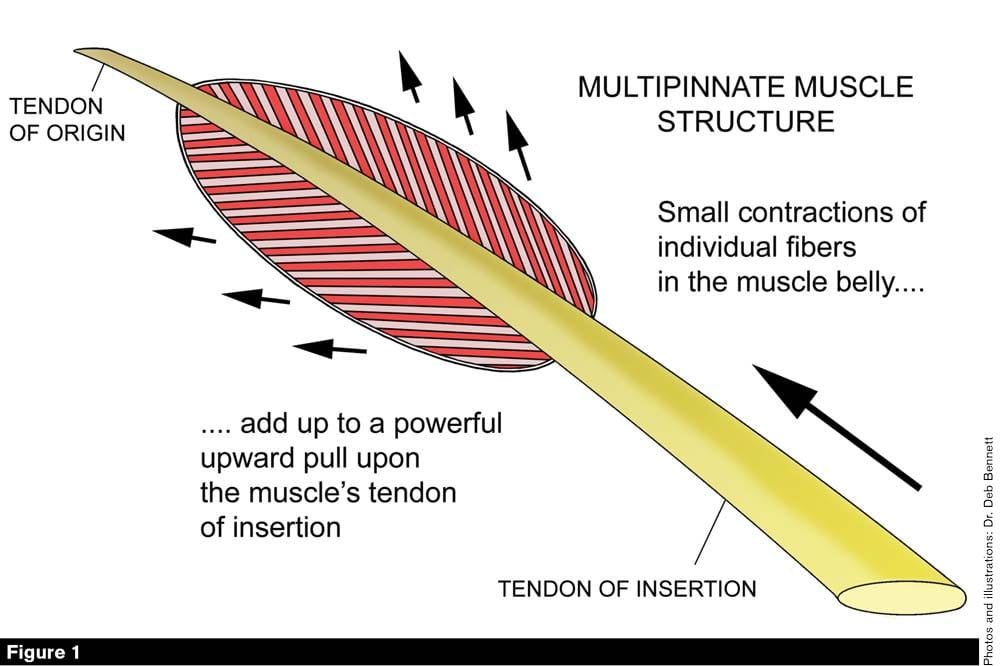Pictured Above: Structure and function of a multipinnate muscle. The example is bipinnate, but there can be more than two bellies surrounding the core tendon. Multipinnate structure allows a high number of contractile muscle fibers to be packed into a given area, so such muscles are often found in the horse’s limbs where space is at a premium for aerodynamic reasons. As the black arrows show, when fibers in the muscle belly contract, they pull upward upon (stretch or tension) the tendon of insertion. The biceps brachii, extensor carpi radialis, SDF and DDF muscles, essential components of the forelimb reciprocating system, all have multipinnate bellies surrounding a core tendon. Contraction of individual muscles is one factor that acts to regulate tension in the system.
Farrier Takeaways
- Hoof trim greatly affects the tensional co-adjustment of the forelimb reciprocating apparatus.
- The goal of “orthopedic” trimming is to minimize and balance the tension on the anterior and posterior components of the equine reciprocating system, enabling all joints to work smoothly within their design limits.
- Balance originates in the reciprocating system and is only secondarily expressed by the hoof, pasterns and shoulder. It is an imbalance in the reciprocating system that the farrier needs to address.
Over much of the past year, through this series I have presented the building blocks of information needed to understand the structure of the forelimb reciprocating apparatus in horses. Starting from collagen and elastin at the molecular level and working through all the various connective tissues structured by…
